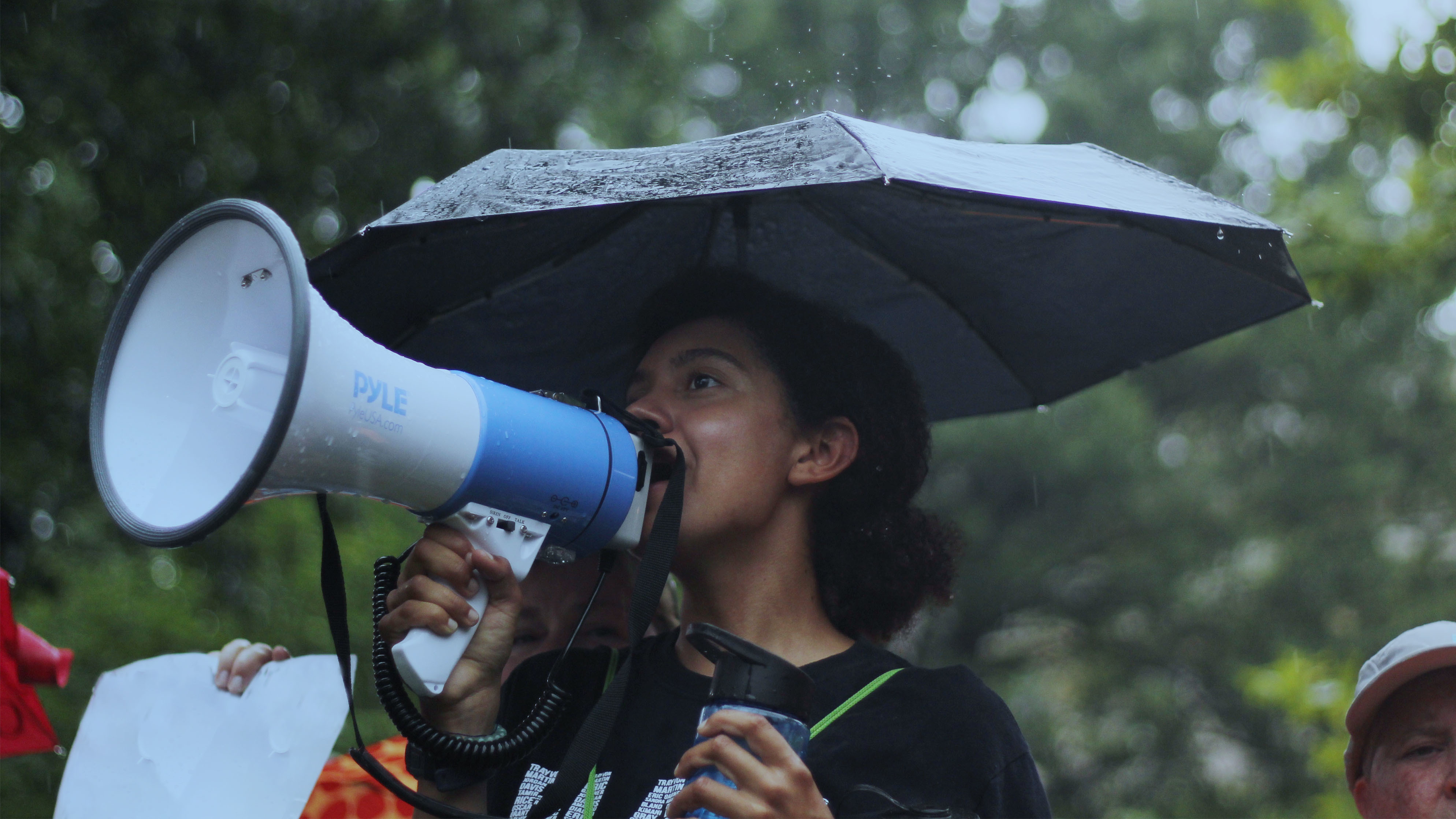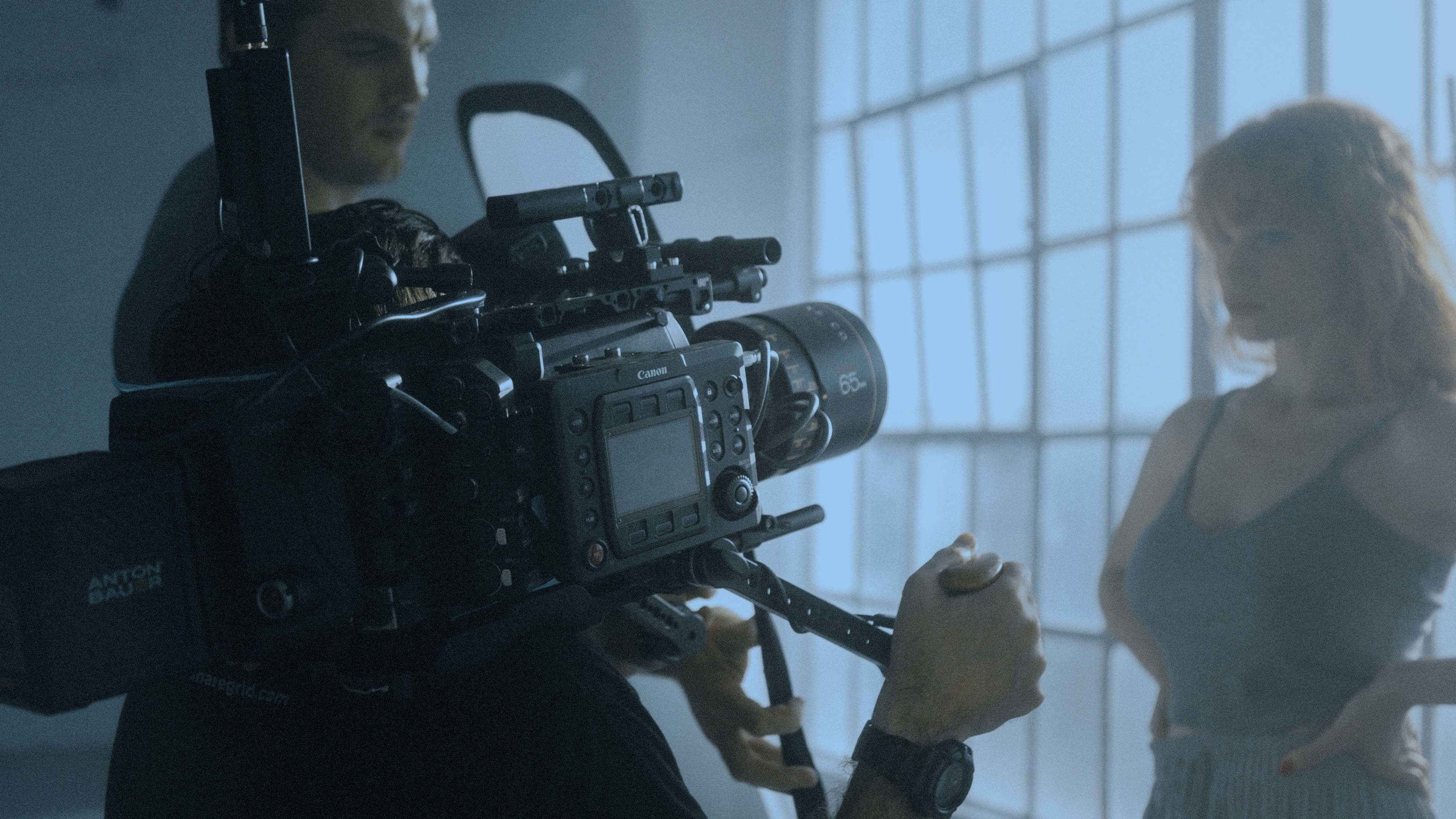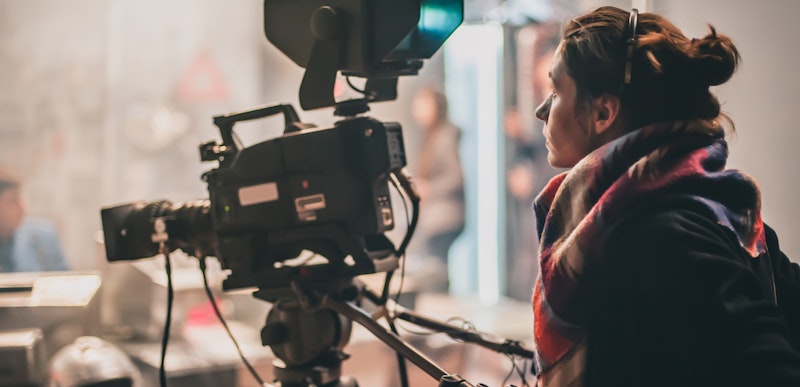It’s your first day on set and set and to avoid looking like a complete newb, you’re going to want to have some basic film terminology down pat. Unfortunately, when it comes to the movie-making biz there is a lot to learn. But don’t stress! With the powers of this glossary and your marvelous memory combined, we know you got this! We’ll get you started with forty set phrases!
Summary
Film Production Terms to Remember
1. Equipment

Stinger – An extension cord
Hot Brick – A walkie-talkie with a fully charged battery.
Legs or Sticks – Simple slang for a tripod.
Clapper – Oh my god you guys, so it turns out that black-and-white striped board that someone snaps in front of the camera before every take does have a name. And that name is clapper. Or clapboard. Or a clacker. And what exactly does this clacker/clapper/clapboard do? Two very important things as it happens. It displays all the scene and take info that the crew needs to sort through the footage at a later date, and the snappy sound it makes is essential for syncing video with the audio during post. So much responsibility for such a small little board.
Boom Mic – A directional mic mounted to the end of a long pole that is then wielded by sound technician folk to capture close-range audio.
Dead Cat – A fuzzy black cover that goes over the end of a boom mic.
Steadicam – Think Baby Bjorn but for a camera. Yup, that’s right. This stabilizing contraption enables you to strap a camera to your big ol’ belly (or rather a vest that you’re wearing around your big ol’ belly) to get those super smooth shots.
Squib – A tiny explosive device used to simulate a bullet hitting an actor. You’ve probably seen squillions of these throughout your movie-watching career, most notably on poor old William Dafoe in Platoon #RIPSergeantElias
Redhead – A type of light with a power rating in the vicinity of 800 watts.
Blonde – Also a type of light but much brighter than a redhead. ( 1000-2000 watts).
Dolly – A wheeled cart onto which you mount a camera in order to capture smooth horizontal shots. Ever since steadicams came onto the scene, dollies have slowly but surely been getting phased out of production. However, there is one shot for which they remain absolutely essential, that being the all-famous Vertigo Effect.
2. People

1st AD – The first assistant director is basically the second in charge on any set. They serve as the all-important link between the head honcho director and the entire cast and crew and are responsible for ensuring that the production runs like a well-oiled machine. Did someone say presssshhha?
2nd AD – Working directly under the 1sst AD, the second assistant director is responsible for drafting up all the logistical documents (call sheets and the like) and making sure that the 3rd AD has the cast and crew in check.
3rd AD – The third assistant director is basically one big people wrangler. It’s their job to ensure that all members of the cast and crew are in the right place and the right time.
Gaffer – Head electrician responsible for setting up all of the lighting equipment used in a given production. You might also hear them being referred to as a Spark or Juicer.
Key Grip – Head technician responsible for setting up all the non-electrical lighting equipment. (Think lighting modifiers, flags, cookies, etc).
Best Boy – Assistant to either the Gaffer or Key Grip, distinguished by the titles Best Boy Electric or Best Boy Grip.
Second Unit – A completely separate crew charged with filming any takes that don’t involve face-to-face interaction, such as inserts and action sequences. Second units usually work simultaneously alongside the main unit to help speed up the production process.
3. Expressions

Blocking – This is the process of working out where to position all the cameras and lights based on where the actors are going to be standing and moving throughout a scene. This might sound like common sense, but in this particular case, the common sense has a name: blocking!
Rhubarb – So you know when you see extras pretending to talk to one another in the background of a scene? Well, dear friends, that is what we call ‘rhubarb.’ Supposedly, this was the word many directors had their extras utter over and over again as they floated around in front of the camera back in the day. Sounds silly, right? And it is — as evidenced by this French and Saunders spoof.
Striking – This is what you can expect sound technicians to yell right before they turn one or several lights. It’s basically their heads up that sh*t is about to get bright.
10/1– If you need to use the restroom, don’t tell anyone, for this would be poor film set etiquette. Instead, simply yell “10/1” and peace out. Your colleagues will know where you’ve gone.
Check the Gate – If a director shouts this out, it means they want the most recent take checked to ensure no impurities (like hair, bugs, arm-waving video bombers) interfered with the lens.
Flag on the Play – When someone realizes that there was something wrong with the most recent take and you need to go back to correct it.
Hot Set – A set that is perfectly set up with all of the props, cameras, and lighting in the correct places. Try to think of it as a cordoned-off crime scene — don’t touch a thing.
Hold the Red – If someone says this — don’t move! Another take is about to happen.
Crowd Base – This is the gathering area where the cast waits before being called onto set (also known as holding area).
Honey Wagon – Hollywood speak for porta-potties.
Crafty – Short for ‘craft services.’ Which is short for ‘catering services.’ Go figure.
Video Village – A cluster of viewing monitors where all the directors gather to watch footage being taken.
4. Documents

Call Sheet – This handy little document pretty much spells the Who, What, Where for each day of shooting. Who (as in which actors) will be needed, what scenes are being filmed, and where they’re being filmed.
Change Pages – Colored pieces of paper detailing any changes to the script. They’re colored differently on purpose so they don’t get confused with the existing pages of the script. The more colors you see, the more changes have been made.
Continuity Script – A continuity script is used to record all the itty bitty details every time a scene is shot — from what length the actors’ hair was, to what the weather was like, to how the set was arranged. This way, if you ever need to go back and reshoot the scene, you can get everything correctamundo.
5. Shots

Extreme Wide Shot – Also known as an establishing shot, extreme wide shots help give the audience some context by showing the building, city, or place where the next scene is about to take place.
Master Shot – Also known as a wide shot, master shots capture all of the relevant actors and action taking place within a scene. Like extreme wide shots, they’re typically used to provide context before jumping to a closer-range shot.
Cowboy Shot – Any shot that shows an actor from the thighs up. These shots were popularized during the Western film era when it was essential for audiences to be able to see the actor’s gun holsters.
Mid-Shot – The most popular shot of all! Mid-shots strike the perfect balance between subject and background and typically feature actors from the waist up. Oprah interviews, presenters reading the news, two actors engaged in dialogue — pretty much all of these shots are done at mid-range.
Insert – A close-up of an object that’s filmed separately and inserted into the scene during editing.
OTS Shot – Short for an over-the-shoulder shot. This is where the camera is positioned over one or both of the actors’ shoulders in a dialogue scene.
Martini Shot – Last shot of the day. Huzzah! If you hear this, it means your long day on set is almost over!
There you have it! Forty film terms to get you started. Even if you manage to lock just a quarter of these expressions away in the vault before your first day, you’ll have more than enough to pass yourself off as a pro. If you know of any essential film set lingo that we’re missing, be a champ and write it into the comments section below.



























